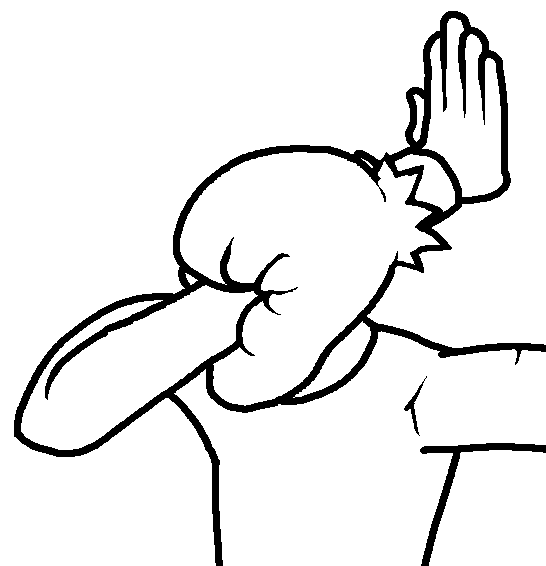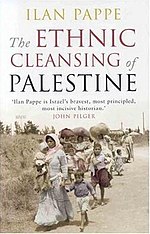:rotfl: :rotfl: :rotfl: :rotfl: :rotfl:
Pois está claro, mas se fosse o Chomsky…
Depois a informação sobre os ataques terroristas é spam! Tenho eu culpa de serem só meia-dúzia?
Já agora como é que se sobe na frente armada palestiniana. É que se começa por baixo, digamos, como suicida, as hipóteses de carreira a longo prazo esfumaçam-se!
[youtube=425,350]http://www.youtube.com/watch?v=1uwOL4rB-go[/youtube]
:rotfl: :rotfl: :rotfl: :rotfl:
Só se ataca países que estejam completamente indefesos.
E que melhor altura para o fazer do que na altura de formação de um novo país! E que melhor desproporção que todos contra 1.
Deram-se mal.
War of Independence - (in Hebrew - Milhemet Hashichrur or Milchemet Hashi’hrur (pronounced Mil 'hemet Hah shi’h rur). It is also called the “1948 War” by Arabs and “Milchemet Tashach” by Jews. The war actually began on or about December 1, 1947
The Israel War of Independence or 1948 War is divided into the pre-independence period and the post-independence period.
The pre-Independence civil war began shortly after the passage of UN General Assembly Resolution 181 which was supposed to partition Palestine into a Jewish state and an Arab State, and an international area including Jerusalem and a large area around it. The Jews were to get about 55% of the country, though this included the Negev, which was mostly desert. As the map at right shows, the Arab and Jewish areas, which were allocated according to demographics, were intertwined. The plan was fragile, but it could perhaps have worked had the sides wanted it it work.
“Believe me, I am talking about things about which I know. You are sitting there in the coastal plains of Palestine, while the Arabs hold the mountain ridges. I know you have some arms and your Haganah, but the Arabs have regular armies. They are well trained and they have heavy arms. How can you hope hope to hold out?” (Larry Collins and Dominique Lapierre, O Jerusalem!, Pan books 1973, page 315).
Various sources give somewhat different numbers for Jewish and Arab soldiers and their armament. According to Herzog and Gazit, 2005, in 1947 there were some 45,000 Haganah troops, but of these, only 15,000 could be part of an effective fighting force, the rest being tied to defensive roles. The total armament of the Haganah in 1947 consisted of 900 rifles, 700 light machine guns and 200 medium machine guns with scarce ammunition (“sufficient ammunition for three days fighting”). The Haganah had 11 single engine light civilian aircraft and about 40 pilots, 20 of whom had RAF combat experience. There were about 350 sailors, but no ships. The Irgun and Lehi numbered between 2000 and 4,000 troops, but they had little arms and no real combat training.
By February 1948, the Haganah had six “brigades” of varying sizes ranging from about 800 to 3,000 troops. Golani in Eastern Galilee, Carmeli in Western Galilee, Givati in the southern coast and lowlands, Alexandroni in the Sharon area, Etzioni in Jerusalem and Qiryati in Tel Aviv. Three additional Palmach battalions were converted into brigades in the next months: Negev brigade in the Northern Negev, Yiftach in the Galilee and Harel in the Jerusalem corridor and Jerusalem. (Herzog and Gazit 2005 pp 18-20).
By April 1948 thanks to clandestine arms acquisitions, but not before, the Haganah had a total of about 20,000 rifles, including Sten guns manufactured in Israel, for its 35,000 paper soldiers. There were no tanks or artillery. “Armored cars” consisted of pickup trucks with a thin overlay of sheetmetal and plywood.
The Arab Palestinians had less troops in organized groups, but relied on the Faza’a or village levee for attacking convoys and for concerted attacks on areas such as Gush Etzion. Most Arab villagers had rifles and there were at least a few machine guns.
The forces of the Grand Mufti Hajj Amin El Husseini were estimated at about 2,000 men under Hassan Salameh and Abdel Khader el Husseini. The Arab Liberation army of Fawzi El Kaukji numbered 3,000 to 4,000, or perhaps as many as 10,000 after May 15, 1948. However, in the pre-independence period, and in the war itself, the decisive force was the Arab Legion or Transjordanian legion led by Sir John Glubb (Glubb Pasha), officered by British soldiers and supplied, until the end of May, with artillery, shells, armored cars and tanks. The Legion was always present in Palestine in some numbers, but was called the “Arab Legion” before May 15, 1948, and the Transjordan Legion thereafter. It numbered between 7,000 and 10,000 soldiers.
E depois, não contentes, tentaram mais uma vez
Tiveram azar, que em vez de meia-dúzia de atentados, foi meia-dúzia de dias.
The Six Day War occurred against the background of continuing Arab world hostility to the State of Israel, which had begun with the War of Independence. In that war, the newly created state of Israel had defeated the Arab armies that had invaded it, and expanded its territory. The war had created about 700,000 Palestinian Arab refugees, who fled or were expelled in 1948.
Officially, no Arab country recognized the armistice lines of 1949 as international borders, and no Arab country recognized Israel, diplomatically. Israel, according to Arab rhetoric, had no right to exist, and was referred to as “The Zionist entity.” Defeating and destroying Israel and “reversing the results of 1948” became central goals of Arab political rhetoric. Prestige and leadership of the Arab world were based on leadership in confrontation of Israel.

